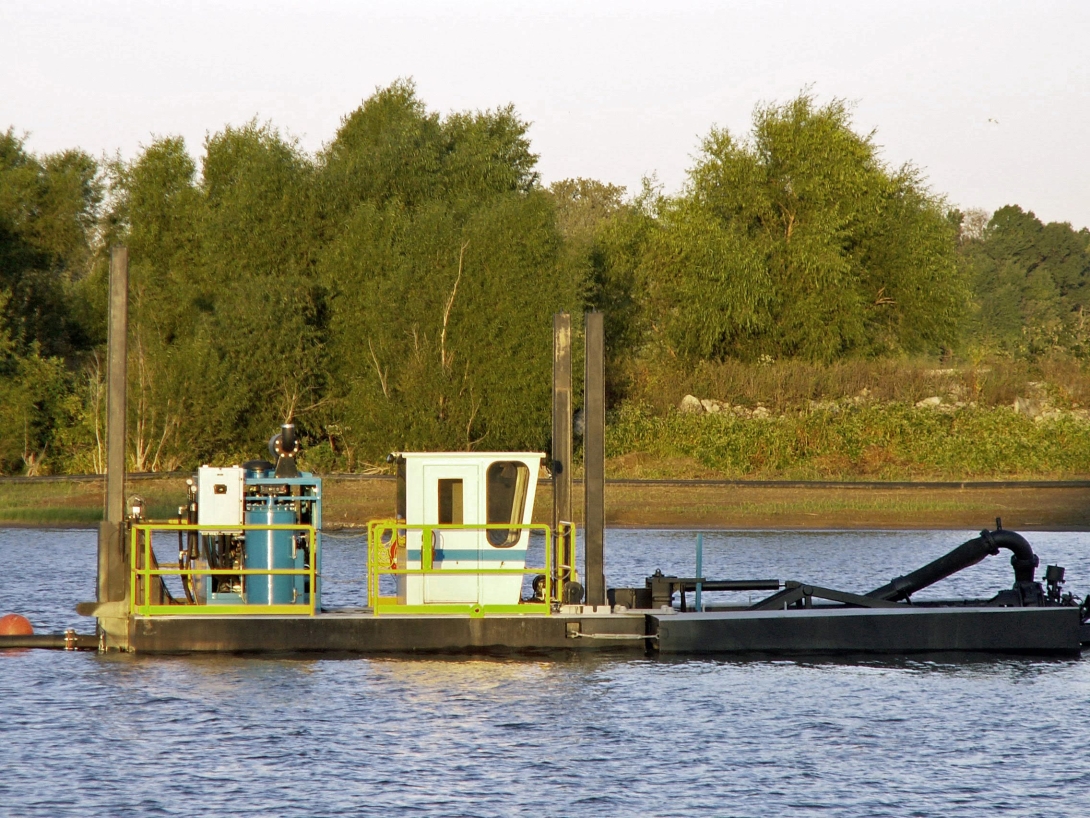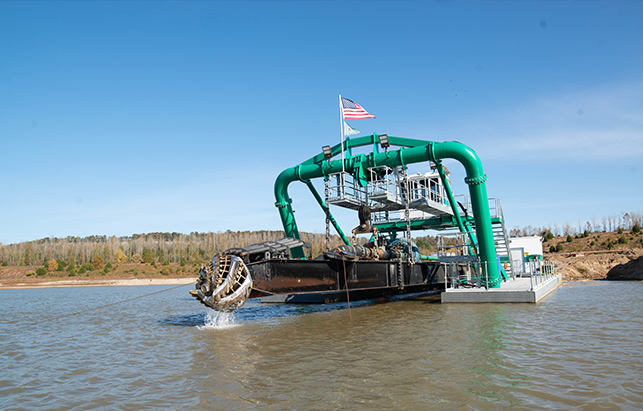The Challenge
The Company needed a dredge that fit the specialty nature of its dredging jobs, but was also easy to transport from site to site.
Our Solution
Veit & Company, Inc., is a specialty contracting and waste-management company, which was originally founded in 1928. In an effort to expand its range of services, Veit started a dredging group in 2012, following the acquisition of Adventure Divers Inc. (ADI Marine). The company had an immediate need for a dredge that was not only suitable for a variety of different dredging jobs, but could also be moved to and from various jobsites with ease.
Veit evaluated five different brands of dredges in 2008 before deciding on DSC Dredge’s Moray Class dredge with an 8-inch swinging ladder design. The choice was made based on the dredge’s ability to access some of the tight areas Veit encounters, in addition to providing the type of agitated cutterhead that was needed to cut particular types of soil. Additinally, the dredge is single-truck transportable.
Veit chose a Moray dredge that measures 42 feet, 10 inches in length and 18 feet, 6 inches in operating width. The dredge weighs 35,000 pounds, with a hull depth of 4 feet – allowing it to fit in tight spaces. Transportation width is only 11 feet, 11 inches, making it easily transportable from one place to another by a single truck. Features on Veit’s Moray dredge include a closed-loop hydraulically driven underwater pump assembly, power up/down winches with API-rated drums for proper cable storage, a PLC-based (Programmable Logic Controller) operating system and a stern kicker spud for dredge advancement and positioning. Digging depths range from 3 feet to 17 feet, 6 inches. The swing width of the swinging ladder ranges from 13 feet to 19 feet, 4 inches.
At a job along the coast of Texas, Veit was hired by another dredging company to taper the sides of a barge terminal channel. The other dredging company had won the bid from a major oil company, before realizing that the job required a dredge that could taper the sides of the channel to prevent the shoreline from caving in. The other company’s dredge had a horizontal cutterhead that could not do the required tapering. Veit was hired to bring in one of its swinging ladder Moray Class dredges, which can change depth as it swings, allowing it to taper the shoreline without a problem. The center of the channel had to be 20 feet wide with a 4-to-1 taper along the shoreline. It was an extra expense for the other company, but Veit was able to stay within the company’s budget using the Moray. Once the work began, the dredge had to be moved twice a day to allow barge traffic to pass through the channel, and after the barges were clear, returned once again to its dredging position. It took an hour out of the work day each time the dredge had to be taken off task, but the Moray was still able to get the job done quickly, without affecting regular barge traffic in the channel.
“We are looking at adding a larger dredge to the fleet,” says Aaron Faken, executive field operations manager for the dredging group at Veit. “It will probably be a 10-inch or 12-inch dredge. We want one with larger capacity that will do the work of two Morays for larger projects – maybe a Barracuda Class dredge from DSC.”







